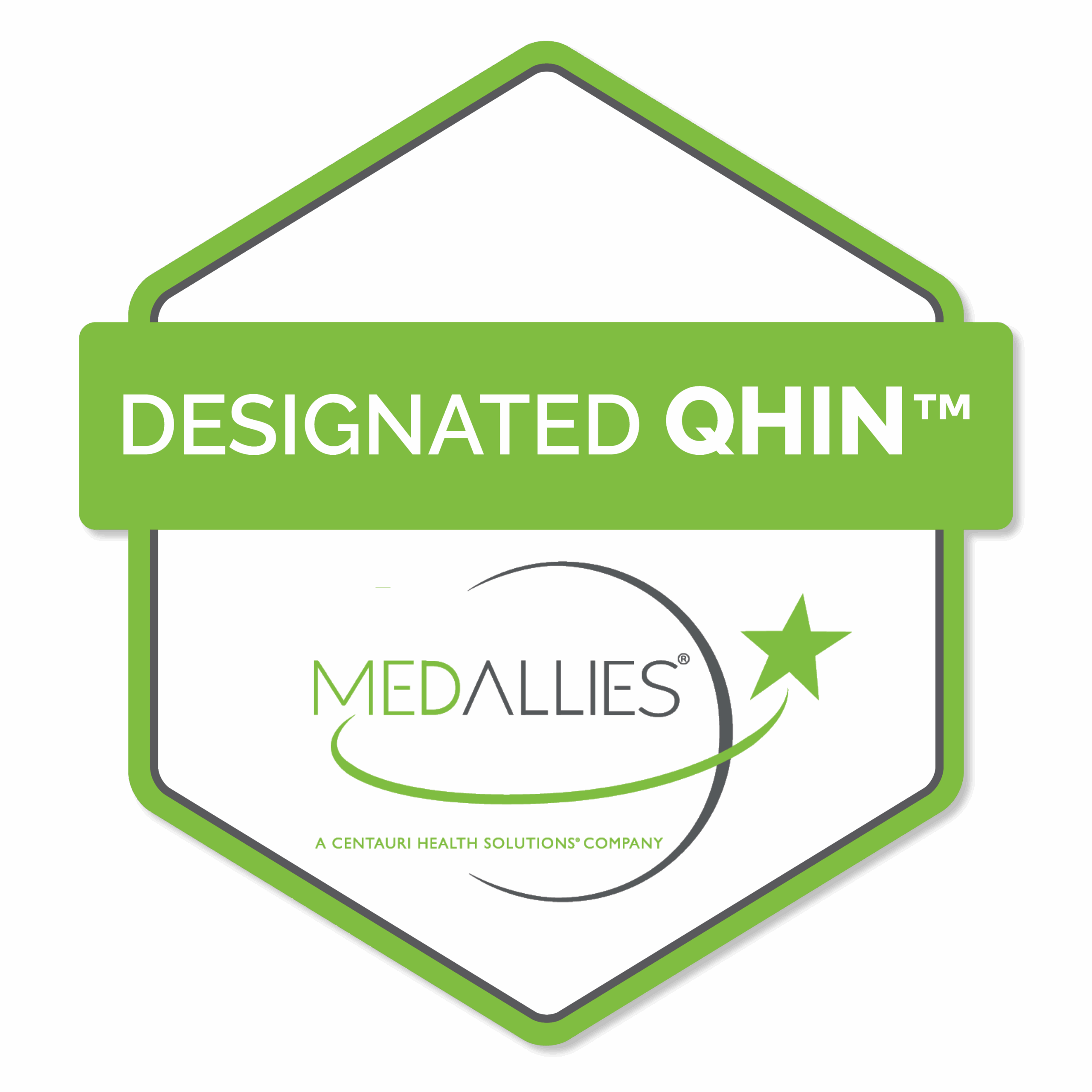MedAllies' QHIN™ is Driving the Future of Healthcare Information Exchange
Operating since 2023
Secure, Reliable, Private and Efficient Nationwide Interoperability
The MedAllies Advantage
QHINs are vital for creating a seamless flow of health information, reducing data silos, and enabling more coordinated patient care. By becoming a QHIN, MedAllies is committed to enhancing data exchange capabilities across various healthcare stakeholders, including providers, payers, and patients.
Utilizing the MedAllies QHIN, our Participants and their Subparticipants receive information for a valid exchange purpose as needed from providers on QHIN, including those connected through Carequality implementers and the CommonWell Health Alliance, and eHealth Exchange networks.
MedAllies’ QHIN offers:
- Ease of Integration and Onboarding
- Proven Experience
- eMPI and Record Locator Service
- Data Usability Model
- Pre-Fetch proactive data retrieval
- White-glove Service and Support

MedAllies QHIN Participant Organizations Can Leverage
- High-capacity networks to exchange transactions: Access to robust networks that handle large volumes of data exchange efficiently.
- A Platform that supports all applicable standards: Including FHIR, HL7, C-CDA, and IHE Profiles.
- An Embedded Record Locator Service (RLS): Enables searching the entire nationwide network in real-time to gather comprehensive patient data — not just in a limited geofenced location.
- Streamlined onboarding and live technical support: Ensuring smooth integration and continuous support for all participants.
- A comprehensive security program: Ensuring the safety of the MedAllies Platform, participants, and data exchanged.
- An industry-leading governance program: To ensure the highest compliance with industry regulations.
- Enhanced data usability: Through MedAllies’ Data Usability Module, which is compliant with Sequoia’s Data Usability Implementation Guide Version 1.
And secure the following data exchange benefits:
- Expanded purposes for the exchange of information: Supporting a variety of use cases for data sharing.
- Fewer barriers to connection and greater access to information: Simplifying the process of connecting different healthcare entities.
- Access to a broader range of provider types, health care, and other healthcare-related constituent organizations: Enabling comprehensive care coordination.
- Reduced independent connections and their inherent intricacies of data exchanges: Simplifying the technical and administrative complexities involved in data exchange.
- Assist providers to fulfill their interoperability Health Information Exchange measure requirements within CMS’ Merit-based Incentive Payment System (MIPS)* and CMS’ Medicare Promoting Interoperability Program for Eligible Hospitals and Critical Access Hospitals (CAHs)**
Please access the following websites for more information:
**Medicare Promoting Interoperability Program Specification Sheets (ZIP)
FAQs
Healthcare providers interested in joining a QHIN can start by contacting an approved QHIN organization, such as MedAllies. They will need to undergo a rigorous application and onboarding process to ensure they meet the necessary standards for data sharing and interoperability.
A variety of healthcare-related organizations can become QHINs, including healthcare providers, payers, public health agencies, and health information exchanges. These organizations must meet specific criteria and undergo a thorough vetting process to be designated as a QHIN.
Being part of a QHIN allows healthcare providers to access a nationwide network of health information, improving patient care by providing comprehensive data from multiple sources. This access enhances clinical decision-making and facilitates better patient outcomes.
QHINs must support various technology standards such as FHIR, HL7, C-CDA, and IHE Profiles. These standards ensure that data can be exchanged seamlessly and securely between different healthcare systems and organizations.
TEFCA establishes strict guidelines and policies for QHINs to follow, ensuring that health information is exchanged securely. This includes data encryption, access controls, and regular security audits to protect sensitive health data.